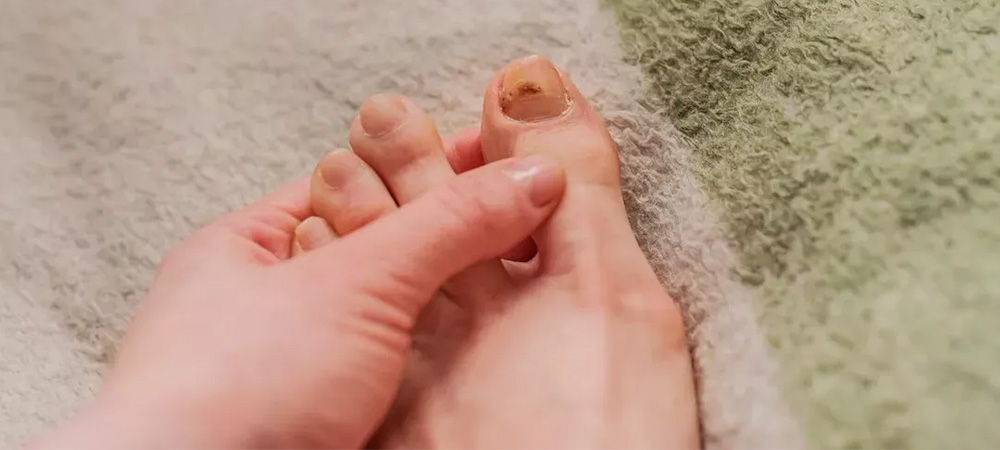Don’t let a fungal infection compromise your foot health. The team at Inspire Health Clinics are here to help you combat toenail fungus and restore toenail health.
If you suspect that you have a fungal infection invading your toenail, you shouldn’t ignore it. Not only is a toenail fungus unsightly, causing your toenail to turn yellow and brittle, but it also does more than just affect the physical appearance of your toenail. That’s why it’s wise to consult with a foot and ankle specialist if you notice signs of a toenail fungus infection.
Dr. David Matthew Graff and the team at Inspire Health Clinics in South Jordan, Utah can help you get a handle on foot fungus. Treatment to eradicate the fungus and tips on preventing reinfection can help to keep your toes in tip-top shape and fungus-free.
With serious health issues like high blood pressure and diabetes to worry about, having toenail fungus may seem like no big deal. Many people put off seeking treatment for toenail fungus. You may dismiss it as a cosmetic issue, however, ignoring a fungus-infected toenail can cause more problems than you bargained for.
What causes toenail fungus?
Anyone can get toenail fungus. It occurs when microscopic fungi attack your nail or nail bed. This is known as onychomycosis. Fungal infections can affect both fingernails and toenails, but toenails are more commonly affected.
It is well known that fungus thrives in warm, moist environments, which increases the risk of fungal infections. You’re at a higher risk of developing a fungal toenail infection when you:
- Use public showers
- Use public swimming pools
- Walk barefoot
- Get a pedicure
- Wear tight shoes or tight socks
Many people contract toenail fungus through skin-to-skin contact with someone who has a fungal infection. Sharing an infected nail clipper or towel can also lead to a fungal nail infection.

Signs of a fungal toenail infection
Because fungal nail infections can affect any number of nails, it is critical to regularly inspect your fingernails or toes for any of the following warning signs:
- Yellow streaks on the nail
- Yellow or white spots at the nail’s base
- Increased nail thickness
- Nail separation
You may also notice an odor coming from the nail.
Infection may spread
Untreated toenail fungus can spread to the surrounding skin on the foot, causing athlete’s foot. Fungus thrives in a warm, dark, moist environment, so if you wear shoes and socks all day and one of your toenails is infected, it can spread easily.
The fungus can also spread to the genitals, where it causes jock itch, a condition that can affect both men and women.
Widespread infection
If left unaddressed, a toenail fungal infection can cause other complications, especially for people with diabetes and other chronic conditions that weaken the immune system. Bacteria can enter the body if a toenail fungus spreads to the skin and causes it to crack.
This can lead to cellulitis, a condition that causes swollen, red, tender skin that requires antibiotic treatment. Cellulitis infection can enter the bloodstream and in rare cases can become life-threatening.
Nail removal
Untreated toenail fungus can go on to cause the nail to separate from the nail bed, which is known as onycholysis. If this occurs, the loose portion of the nail must be removed. Even if an infected toenail does not become loose, it may need to be removed if the fungus does not clear up with conventional treatments.
In this case, an avulsion procedure is used to remove the entire nail. A matrixectomy is a surgical procedure that removes the nail permanently. This either surgically or chemically destroys the growing center at the base of the nail, so it won’t grow back.
Toenail fungus treatment
It’s best to consult a doctor if you suspect you have a toenail fungal infection. A small sample of your toenail may be taken and analyzed to confirm the presence of a fungus. If the test is positive, an antifungal medication, either oral or topical, may be prescribed to help treat the fungus.
If the affected area of your toenail is small and does not cause pain, Dr. Graff may advise you to wait and see how the infection progresses.
Don’t put off getting treatment for toenail fungus. Trust the Inspire Health Clinics team to promptly evaluate and diagnose your case, and recommend the most appropriate treatment.
Give our team a call at our South Jordan, Utah office. You can also book online to schedule a visit with Dr. Graff.






